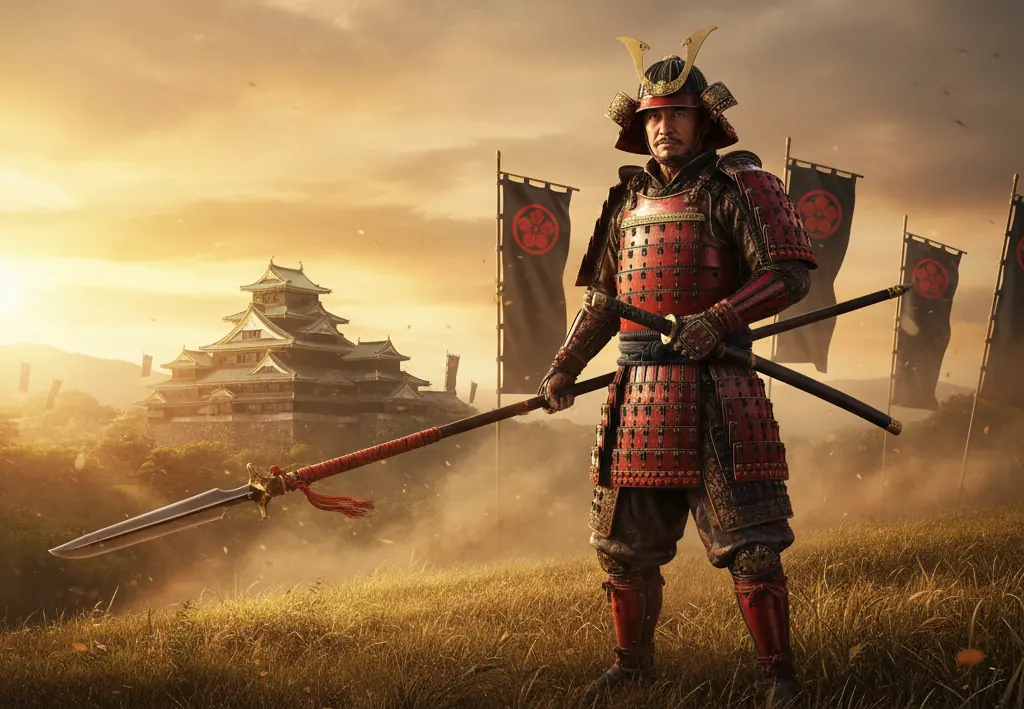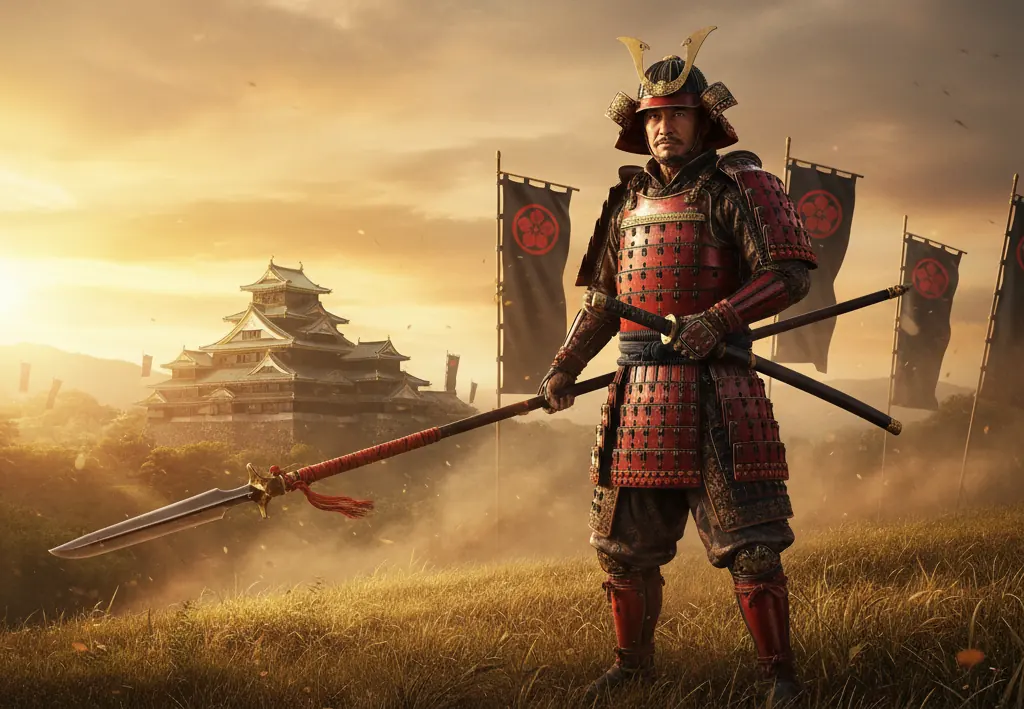
Maeda Toshiie (1538–1599) was a distinguished samurai and feudal lord who rose to prominence during Japan’s Sengoku (Warring States) and Azuchi-Momoyama periods. Initially serving as a close retainer of Oda Nobunaga, he later became one of the five senior elders under the Toyotomi regime. Renowned for his exceptional spear skills and known by the nickname “Mataza of the Spear,” Toshiie was celebrated for his valor and loyalty. He played a vital role in supporting Toyotomi Hideyoshi’s unification of Japan and governed the prosperous Kaga Domain—earning the title of the first “Lord of One Million Koku.” His life bridged the turbulent end of the Sengoku era and the dawn of Tokugawa rule.
Early Life and Service to Oda Nobunaga
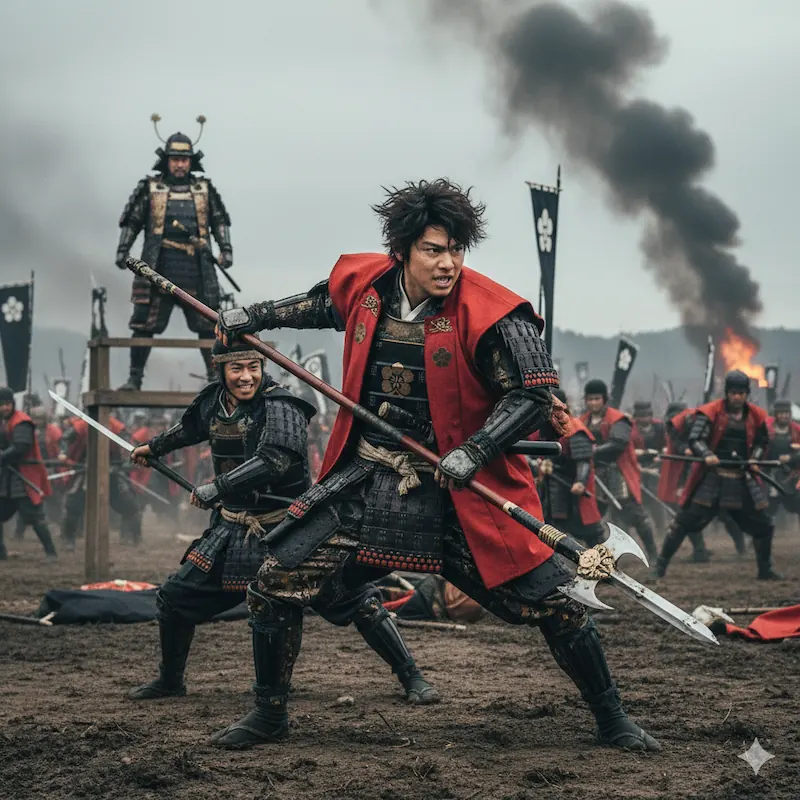
Toshiie was born in 1538 in Arako Village, Kaitō District, Owari Province (present-day Nakagawa Ward, Nagoya). He was the fourth son of Maeda Toshiharu (Toshimasa), the lord of Arako Castle, and was known in his youth as Inuchiyo. Around age 14, he entered the service of Oda Nobunaga as a page. Despite having elder brothers, Toshiie was chosen to succeed the family headship—an unusual decision reflecting Nobunaga’s deep trust in him. In his youth, he shared Nobunaga’s flamboyant tastes and fiery temperament. He formed a close friendship with another young retainer, Kinoshita Tōkichirō (later Toyotomi Hideyoshi). Nobunaga playfully nicknamed Hideyoshi “the Monkey” and Toshiie “the Dog,” highlighting their contrasting personalities but close camaraderie.
Toshiie’s military career began when he was selected for Nobunaga’s elite corps, the “Aka-horo-shū,” a unit distinguished by their red capes. His prowess with the spear earned him the moniker “Mataza of the Spear.” He gained fame through his fearless exploits—fighting under Nobunaga at the Battle of Okehazama (1560) against Imagawa Yoshimoto, and later distinguishing himself in major campaigns such as Anegawa (1570) and Nagashino (1575). These successes won him Nobunaga’s unwavering confidence and established him as one of the Oda clan’s foremost commanders.
The Death of Nobunaga and Toshiie’s Role in Japan’s Unification
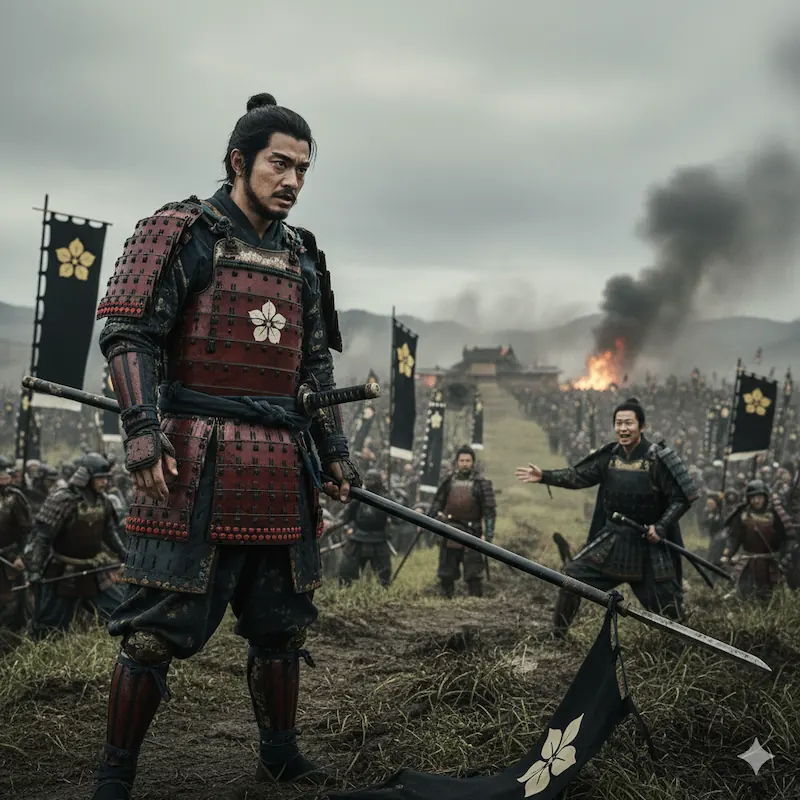
In June 1582, Oda Nobunaga met his end in the Honnō-ji Incident. At the time, Toshiie was serving under Shibata Katsuie in the northern provinces, fighting Uesugi Kagekatsu, and thus was unable to participate in the ensuing Battle of Yamazaki. During the Kiyosu Conference, held to decide Nobunaga’s successor, Toshiie sided with Shibata due to his regional ties to the north, though his longstanding friendship with Hideyoshi left him torn.
In the decisive Battle of Shizugatake (1583), Toshiie initially fought under Shibata’s command with 5,000 troops but withdrew mid-battle, reportedly in response to overtures from Hideyoshi. His defection demoralized Shibata’s army and helped secure Hideyoshi’s victory. Toshiie subsequently surrendered to Hideyoshi, who not only confirmed his old fiefs but rewarded him with additional lands—two districts of Kaga formerly held by Shibata. Establishing his new base at Kanazawa Castle, Toshiie came to rule over Noto and half of Kaga Province.
Now a daimyō under Hideyoshi, Toshiie continued to distinguish himself in numerous campaigns. During the Komaki-Nagakute campaign (1584), while Hideyoshi clashed with Tokugawa Ieyasu, Toshiie defended the north against his former ally Sassa Narimasa, defeating him decisively at the Battle of Suemori. Following Hideyoshi’s consolidation of power and his appointment as Kampaku (Imperial Regent) in 1585, Toshiie served loyally in northern defense and administrative duties, contributing significantly to Toyotomi governance. In 1590, he joined the Odawara Campaign alongside Uesugi Kagekatsu, leading northern forces that captured key Hōjō strongholds such as Hachiōji Castle—further solidifying his standing within Hideyoshi’s regime.
Ruling the Kaga Domain: Lord of One Million Koku
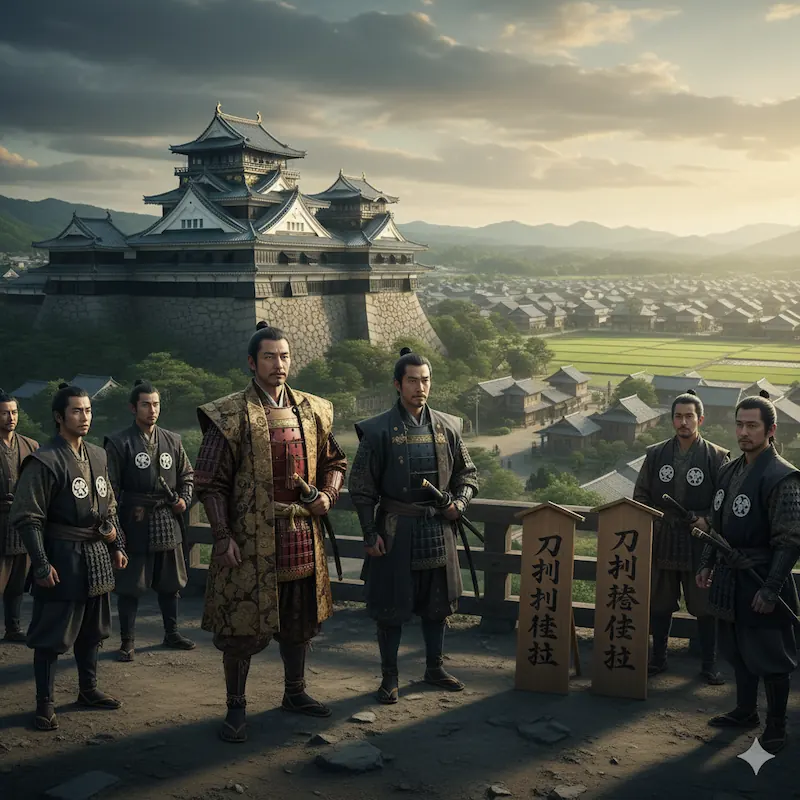
After Japan’s unification, Toshiie was granted not only Kaga and Noto Provinces but also parts of neighboring Etchū, amassing a total of about 830,000 koku in annual rice yield—some sources even claim close to one million, inspiring the famed epithet “Kaga Hyakumangoku” (Kaga of One Million Koku). Excluding Tokugawa Ieyasu, Toshiie held the largest domain in Japan, effectively ruling the entire Hokuriku region.
From his seat at Kanazawa Castle, Toshiie devoted himself to sound governance. He conducted land surveys, restored public order, and enforced Hideyoshi’s “Sword Hunt Edict” to stabilize the region, which had been ravaged by uprisings during the Ikkō-ikki rebellions. The prosperous foundation of the later Kaga Domain can largely be attributed to Toshiie’s era of reform and recovery.
Toshiie also earned deep respect for his leadership and compassion. Supported by capable retainers such as Murai Nagayori and Okumura Nagafuku, he was admired for both his military vigor and magnanimity—famously sheltering the Christian lord Takayama Ukon. His charisma and integrity made him a unifying figure within Hideyoshi’s circle, often described as “the conscience of the Toyotomi government.” His skillful administration of Kaga revealed that his greatness extended far beyond the battlefield.
The Korean Campaign and Final Years
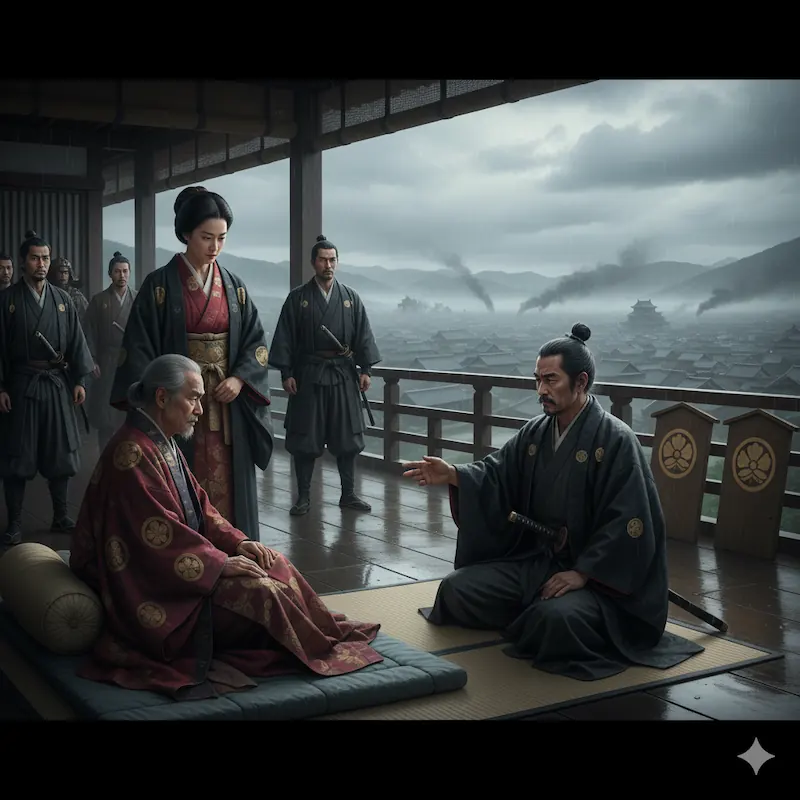
In 1592, Hideyoshi launched the invasion of Korea (the Imjin War) in an attempt to subjugate Ming China. Toshiie, leading 8,000 troops, was among the first to depart Kyoto for the forward base at Nagoya in Kyushu. When the aging Hideyoshi contemplated crossing to Korea himself, both Toshiie and Tokugawa Ieyasu persuaded him to abandon the plan. During Hideyoshi’s temporary return to Osaka after his mother’s death, Toshiie and Ieyasu oversaw military and administrative affairs in his absence—an arrangement that foreshadowed the later Council of Five Elders (Go-Tairō).
Although Toshiie saw little direct combat in Korea, he remained a senior statesman whose authority lent stability to the Toyotomi regime. When Hideyoshi died in August 1598, Toshiie was appointed, per Hideyoshi’s will, as one of the Five Elders to support the young heir Toyotomi Hideyori. However, Toshiie himself was gravely ill, and in April 1599—barely eight months later—he died at his Fushimi residence at age 62.
Toshiie’s death removed the last great figure capable of restraining Tokugawa Ieyasu. While Hideyoshi lived, and even shortly after, Ieyasu had exercised caution out of deference to Toshiie. But with his passing, Ieyasu began his open bid for supremacy. Later that same year, Ieyasu accused Toshiie’s heir, Maeda Toshinaga, of treason. To prove their loyalty, Toshiie’s widow, Matsu (later known as Hoshūin), volunteered to serve as a hostage in Edo. Her self-sacrifice saved the Maeda clan, which thereafter aligned with the Tokugawa. At the Battle of Sekigahara (1600), the Maeda forces fought on the Tokugawa side, ensuring the clan’s survival into the Edo period.
The Legacy of Maeda Toshiie
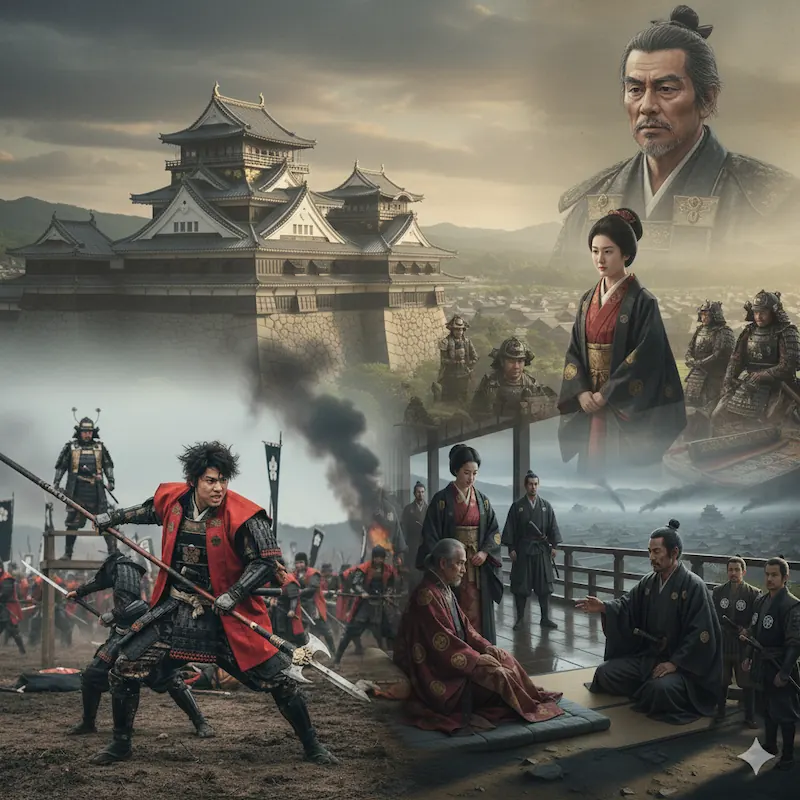
Maeda Toshiie is remembered not only as a fearless warrior—the “Mataza of the Spear”—but also as a loyal and astute statesman. Serving both Oda Nobunaga and Toyotomi Hideyoshi with unwavering fidelity, he rose to become one of the most powerful lords of his age. His humility and steadfast loyalty earned him the title “the conscience of the Toyotomi government.” Many historians speculate that had Toshiie lived longer, the fate of the Toyotomi regime—and indeed Japan’s history—might have taken a very different course.
Toshiie’s legacy endured through the Maeda clan he and his wife Matsu established. The story of Matsu’s selfless decision to become a hostage is celebrated as a symbol of devotion and loyalty. Under their descendants, the Kaga Domain flourished as one of Japan’s wealthiest and most cultured regions during the Edo period. Toshiie’s life, bridging war and peace, continues to captivate audiences today, inspiring countless novels, dramas, and historical works.
Maeda Toshiie and the Series “SHŌGUN”
The recent international drama SHŌGUN portrays the turbulent years surrounding the Battle of Sekigahara, focusing on the power struggle between figures modeled after Tokugawa Ieyasu (“Toranaga”) and Ishida Mitsunari (“Ishido”). The series references the death of a ruler resembling Toyotomi Hideyoshi (“the Taikō”) and the formation of the Council of Five Elders—yet Maeda Toshiie himself does not appear. Historically, Toshiie had already passed away in 1599, just before the events depicted in the show, explaining his absence from the narrative.
Nevertheless, Toshiie’s absence is felt throughout that story’s world. During his lifetime, Ieyasu dared not act rashly, and Toshiie’s presence maintained a fragile balance among the Toyotomi factions. The rise of “Toranaga” in SHŌGUN mirrors the real historical vacuum created by Toshiie’s death. Had he lived even a few years longer, the entire power dynamic—and perhaps the outcome of history—might have been very different. Though his name may be unfamiliar to Western audiences, Maeda Toshiie was a pivotal figure whose life shaped the path that led to the first “Shōgun.”
Back To Maeda Toshiie front page
